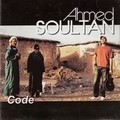How widespread is the phenomenon of violence against children in Morocco and what its most common forms?
The phenomenon of violence against children is worsening daily, exacerbated by the disintegration of family structures in Morocco, as well as the emergence of new forms of violence against young people aged 0 to 18. Among these, we note online violence, including moral and sexual harassment and sexual exploitation, is on the rise. Child trafficking and exploitation through begging and theft are also growing. Child marriage remains a major problem, wich is intrinsically linked to poverty.
Do you have any recent figures in terms of reported cases, types of violence and regions most affected?
Work on the phenomenon of violence against children remains one of the subjects on which no studies or reports have been published, as it is always linked to domestic violence, i.e. violence against the mother. It is therefore difficult to find precise figures or statistics. However, at a local level, through our association ANIR, we have noted an increase in the number of children who are victims of violence, particularly harassment and injuries among children aged between 9 and 15.
How does Morocco's current legal and institutional framework support or hinder the protection of children subjected to violence, and what changes are needed in this respect?
Articles 408-409-410-411 of the Moroccan Penal Code stipulate that penalties apply to anyone who commits violence against a child under the age of 15. Nevertheless, there is a serious lack of protection and prevention mechanisms. Generally speaking, institutions fail in their duty to protect street children, children of single mothers and abandoned children. Programs to raise awareness of the dangers of violence against children are virtually non-existent.
How does your association work with local authorities and other players to identify and help children subjected to violence, and what are the results of this collaboration to date?
The association works alongside two separate intervention units: one, dedicated to the reception of children with the support of hospitals, the police and the family court, aims to provide them with protection; while the other, run by the Khénifra region, focuses on comprehensive support for children.
ANIR helps children affected by violence by offering them psychological support from a specialist, legal assistance, reintegration into the educational system, a guarantee of social stability and income for their families. However, this approach is fraught with difficulties, particularly in the case of children of single mothers, since the institutions that take them in very often refuse to take them in if the mother is present.
More often than not, this leads to the separation of mother and child, exposing the latter to a form of institutional violence. Nevertheless, despite these obstacles, civil society continues to play an essential role in supporting children who are victims of violence.
What long-term objectives do you hope to achieve with ANIR?
Through our programs, our association is committed to preserving children's family cohesion, promoting quality education and introducing protective measures against violence. In addition, we advocate tougher penalties for anyone guilty of violence or crimes against children. Through a specific project, our association aims to guarantee the fundamental rights of children born to single mothers, offering them psychological, social and economic support.
We appeal to all components of Moroccan society, in particular the Ministry of Solidarity, to draw up a comprehensive strategic plan to eradicate violence against children.





 chargement...
chargement...













